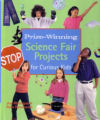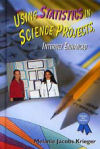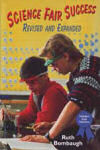The Science Fair Ciruit Additional Information
Additional information about the Discovery Channel Young Scientist Challenge (DCYSC) is available at school.discovery.com/sciencefaircentral/dysc/ (Discovery Channel) and www.sciserv.org/dcysc/Index.asp(Science Service).
Information about the Intel International Science and Engineering Fair can be found at www.sciserv.org/isef/ (Science Service) and www.intel.com/education/isef/(Intel).
Tips for doing science projects are available at http://www.sciencenewsforkids.org/pages/sciencefairzone/studenttips.asp.
Sohn, Emily. 2006. Pollution detective. Science News for Kids (June 28). Available at http://www.sciencenewsforkids.org/2006/06/pollution-detective-3/.
______. 2006. Snow traps. Science News for Kids (June 7). Available at http://www.sciencenewsforkids.org/2006/05/snow-traps-3/.
______. 2005. Power of the Wind. Science News for Kids (March 9). Available at http://www.sciencenewsforkids.org/2005/02/power-of-the-wind-2/.
For additional articles about DCYSC and ISEF, go to http://www.sciencenewsforkids.org/pages/sciencefairzone/dcysc.asp.
ScienceFairZone
Peter Borden: Effect of Neem Oil on Mosquitoes
http://www.sciencenewsforkids.org/articles/20040331/ScienceFairZone.asp
Joanna Guy: What Do You Expect?
http://www.sciencenewsforkids.org/articles/20060412/ScienceFairZone.asp
Saving Birds from Wind Turbines
http://www.sciencenewsforkids.org/articles/20061011/ScienceFairZone.asp
Books recommended by SearchIt!Science:
 |
Prize-Winning Science Fair Projects for Curious Kids —
Joe Rhatigan, Rain Newcomb
Published by Lark Books/Sterling, 2004.
It’s science fair time again, and this year you’ve promised not to wait until the night before the fair to do your experiment. You want to pick a really interesting, exciting topic. But how do you decide? The first chapter of this book offers advice on picking a topic, turning the topic into a question, and following the scientific method. The next three chapters suggest projects in biology, physical science, and chemistry. These 50 projects explore memory, gravity, skin sensitivity, light pollution, bug zappers, mummifying fishes, boosting slime, growing crystals, and many other topics. Illustrated with color photos and diagrams, each experiment lists materials, explains the procedure, and offers suggestions for further investigations. |
 |
Using Statistics in Science Projects — Melanie Jacobs Krieger
Published by Enslow Publishers, 2002.
You’ve compiled the data for your science project. Now what? It’s time to turn to statistics to analyze and interpret the data. And if you don’t know how to use statistics, turn to this practical book. Learn how to organize and graph your data, and find descriptive statistics about your numbers, such as the median, range, and standard deviation. Find out about normal distribution, search for correlation between variables, and delve into the world of inferential statistics. Finally, take your knowledge of hypothesis testing and statistics and test it on some of the science projects suggested in this book. Black-and-white photos, Internet resources, and appendixes with tables, formulas, and guidelines for hypothesis testing, as well as a glossary and an index, are included. If you don’t know anything about stuff like class intervals, correlation coefficients, or critical values—don’t be intimidated, because this book will teach you! |
 |
Science Fair Success— Ruth J. Bombaugh
Published by Enslow Publishers, 1999.
When it comes to science fairs, the first step—choosing a topic—is sometimes the hardest. This guide offers step-by-step advice for creating a science fair project that not only will be interesting and fun but also will wow the judges. The author, a science teacher who has helped many students through the science fair process, suggests different ways to pick a topic. Next are tips for using scientific methods, keeping close track of the results, writing a report of your findings, and designing an eye-catching display. Examples of prize-winning projects will give you an idea of what teachers and judges are expecting. Black-and-white photos, sketches, a list of suppliers of scientific materials, a reading list, tips for teachers, and an index are included. |